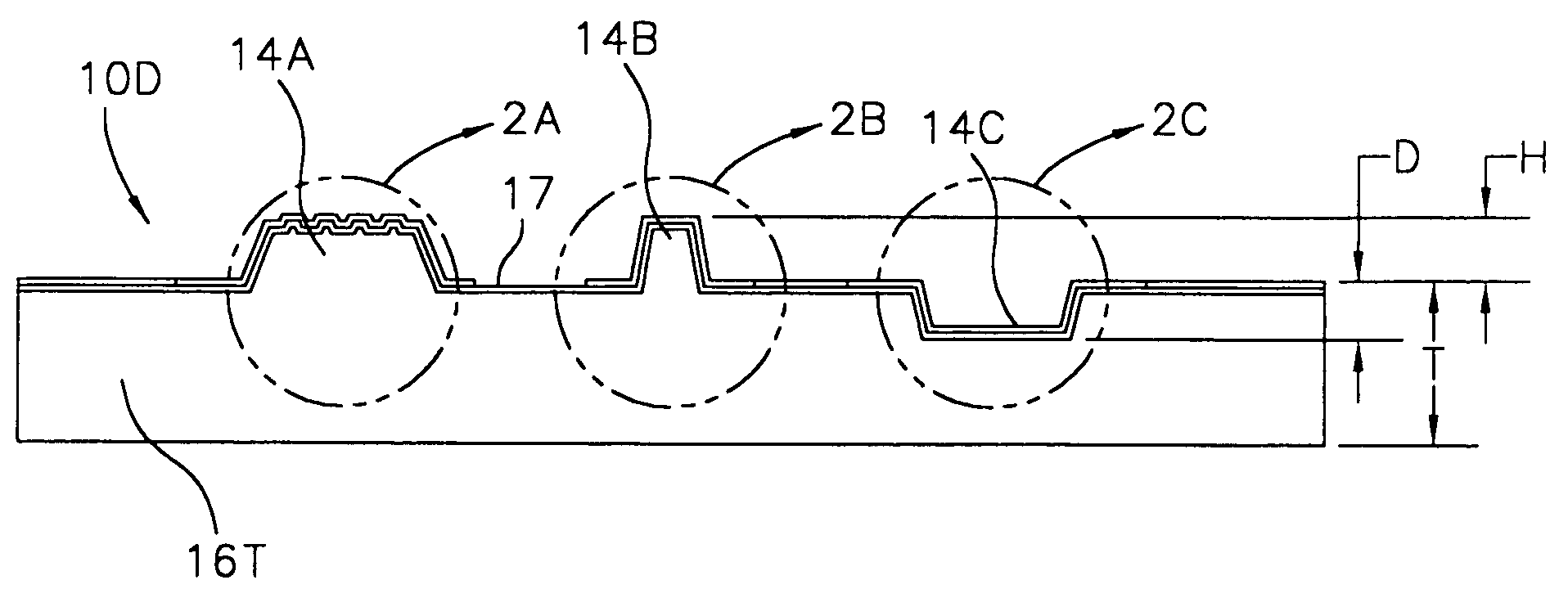Method for fabricating a silicon carbide interconnect for semiconductor components
a technology of silicon carbide and interconnects, which is applied in the direction of instruments, basic electric elements, solid-state devices, etc., can solve the problems of insufficient electrical conductivity of interconnects, inability to resist deformation, and conductive materials used in interconnects that do not possess sufficient strength to resist deformation, so as to improve the electrical conductivity of interconnect contacts
- Summary
- Abstract
- Description
- Claims
- Application Information
AI Technical Summary
Benefits of technology
Problems solved by technology
Method used
Image
Examples
Embodiment Construction
[0038]As used herein, the term “semiconductor component” refers to an electrical element or assembly that contains a semiconductor die. Exemplary semiconductor components include bare semiconductor dice, chip scale packages, conventional semiconductor packages, wafers containing dice or chip scale packages, panels containing chip scale packages, boards containing semiconductor dice, and electronic assemblies, such as field emission displays, containing semiconductor dice.
[0039]In FIG. 1A, a wafer level interconnect 10W is illustrated. The interconnect 10W is adapted to electrically engage wafer sized components such as semiconductor wafers. In the illustrative embodiment, the interconnect 10W has the peripheral shape of a semiconductor wafer. However, depending on the components being electrically engaged, other peripheral shapes are possible. In addition, the interconnect 10W includes a plurality of contact sites 12 corresponding to the location of the dice on the wafer. Again, the...
PUM
| Property | Measurement | Unit |
|---|---|---|
| height | aaaaa | aaaaa |
| depth | aaaaa | aaaaa |
| penetration depth | aaaaa | aaaaa |
Abstract
Description
Claims
Application Information
 Login to View More
Login to View More - R&D
- Intellectual Property
- Life Sciences
- Materials
- Tech Scout
- Unparalleled Data Quality
- Higher Quality Content
- 60% Fewer Hallucinations
Browse by: Latest US Patents, China's latest patents, Technical Efficacy Thesaurus, Application Domain, Technology Topic, Popular Technical Reports.
© 2025 PatSnap. All rights reserved.Legal|Privacy policy|Modern Slavery Act Transparency Statement|Sitemap|About US| Contact US: help@patsnap.com



